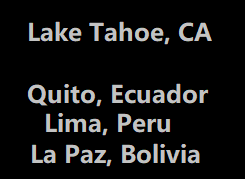KORDILLERA Bottom Line:
Rope-up only on glaciers and flatter areas where a fall won’t drag down others tied to you…
The Debate
The debate over whether to rope up or not in mountaineering has been a long-standing controversy in the climbing community, with safety concerns often clashing with purist ideals and environmental considerations.
Safety vs. Purism
On one side of the debate, proponents of roping up argue that fixed ropes and anchors are essential safety measures, particularly on challenging routes like Mount Everest. These tools can significantly reduce risks during ascents and descents, especially when climbers are exhausted or facing treacherous conditions1. For many, including Sherpas who frequently navigate these routes, ropes are indispensable for minimizing daily hazards.
However, purists like Reinhold Messner argue that relying on fixed ropes detracts from the authentic climbing experience4. This perspective values self-reliance and minimal interference with the natural environment, aligning with the spirit of traditional mountaineering.
Environmental Concerns
The use of permanent anchors and fixed ropes has come under scrutiny for potentially violating “Leave No Trace” principles, especially in wilderness areas. In 2024, the U.S. National Park Service and Forest Service proposed implementing restrictions on these devices, sparking debate among climbers and conservationists.
Practical Considerations
Mountaineers must weigh various factors when deciding whether to rope up:
-
- Route difficulty and exposure
-
- Team size and experience level
-
- Weather conditions and visibility
-
- Potential for crevasses or other hidden dangers
Many experienced climbers opt for a balanced approach, using ropes selectively based on the specific challenges of each route section.
Ongoing Debate
The controversy continues to evolve, with recent incidents highlighting its complexity. In 2024, allegations of sabotaged ropes on Everest led to accusations and a government investigation, underscoring the high stakes involved in rope-related decisions.
As the mountaineering community grapples with these issues, the debate over roping up remains a crucial aspect of climbing ethics, safety protocols, and environmental stewardship in the world’s highest peaks.



Comments are closed